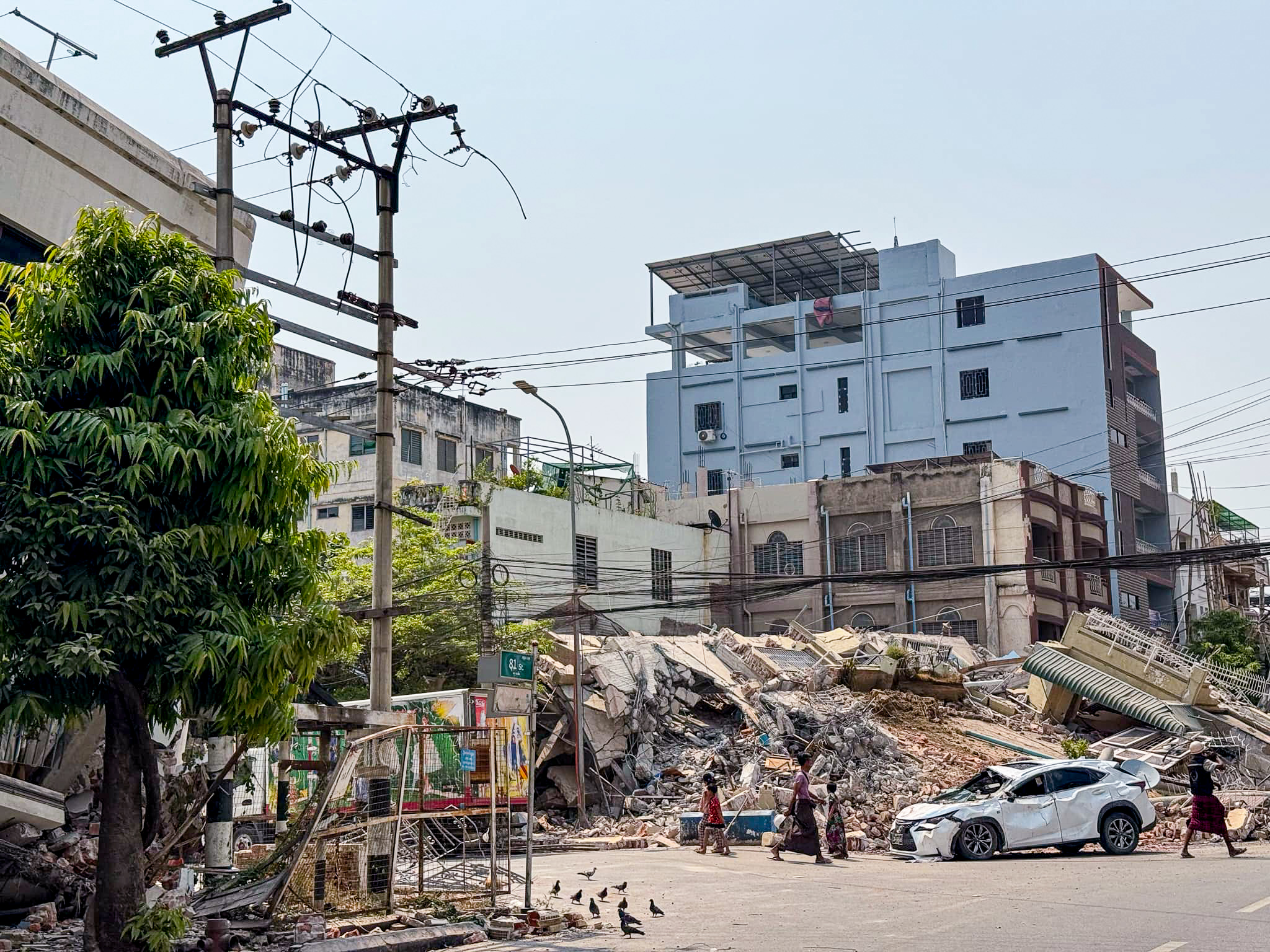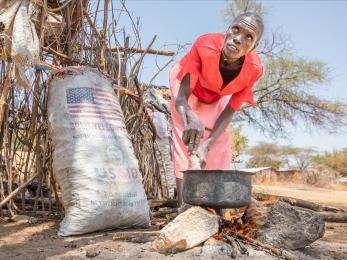Sudan Crisis: Why the hunger disaster is surging and what can be done to help
Conflict is driving displacement, hunger, and dire need for humanitarian aid

Sudan has already been recognized as the center of one of the world’s worst humanitarian crises. Two years of grinding conflict have multiplied hunger, displacement, and suffering – pushing more people to the brink of catastrophe.
Civil war first broke out between Sudanese Armed Forces and the Rapid Support Forces in April 2023. Since then, the country has faced massive displacement and the collapse of the health care system. Necessities such as food, shelter, and water are now well beyond reach for many families. In 2025, 30.4 million Sudanese are in need urgent help – a staggering 23% increase in just the last year.
“People who have survived against all odds over the past two years are now at their breaking point,” said Tjada D’Oyen McKenna, Mercy Corps CEO. “Half of Sudan’s population is going hungry, and millions already enduring severe, famine-like conditions.”
The worst hunger crises of the 21st century—compounded by man-made conflict
People in Sudan are experiencing one of the fastest deteriorating hunger crises in the world. Famine conditions are rapidly spreading, and children are dying every day from hunger. Most markets and supply routes have broken down, and prices for food and basic goods have skyrocketed—making even the most essential items unaffordable for many families.

The scale of starvation and deprivation may be even more catastrophic than we know in areas where information is hard to gather. “Since 2023, our area has been under siege and blackout,” said Abdallah, a community member in South Kordofan. “Some families lost their children and breadwinners to hunger. Others were forced to eat grass and tree leaves to survive, which led to poisoning and death—especially among children.”
Sudan now ranks among the top four countries with the highest rates of severe malnutrition. In Central Darfur, Mercy Corps assessments conducted between June and July 2024 found that nine out of ten children under five were suffering from life-threatening malnutrition.
Our teams in Sudan share heartbreaking and unimaginable stories of loss and deep suffering from communities. They have reported cases of sheer desperation, like a father trying to sell his three children at the market, hoping someone who could feed them would take them in. This is the grim reality of Sudan’s man-made hunger crisis.

The world's fastest growing displacement crisis – millions seeking safety
“The world needs to hear what’s happening in Sudan. Millions have been forced to leave their homes,” said Abdulrazig, a community member in South Darfur.
More than 12 million people were forced from their homes—over half of them children. One in every three Sudanese is now forcibly displaced, making Sudan the country with the highest number of internally displaced people globally. As violence escalates, families who have already lost everything are uprooted again and again, caught in a relentless cycle of displacement, hunger, and danger.

Nearly 3.5 million people have fled Sudan since April 2023, seeking refuge in neighboring countries including Chad, South Sudan, Egypt, Ethiopia, Libya, Uganda, and the Central African Republic. In countries hosting Sudanese refugees, resources are stretched to the breaking point as needs grow by the day.
What Mercy Corps is doing to help
Mercy Corps is working alongside communities and partners to support Sudanese families who are struggling to survive. Since the conflict began in 2023, we have provided life-saving humanitarian assistance to almost 1.5 million people across Sudan.
Despite challenging conditions on the ground, our teams are currently mobilized across nine of Sudan’s eighteen states to distribute emergency cash to communities and help families access shelter, food, medicine, and other essentials.

Recent cuts to U.S. foreign aid have impacted humanitarian efforts. Due to the termination of some Mercy Corps programs in Sudan, more than 150,000 people will no longer have access to safe drinking water, and 40,000 people will lose food assistance.
But Mercy Corps has worked in Sudan since 2004. We remain committed to doing everything in our power to support communities through this crisis.
Crisis in Sudan: How you can help
Mercy Corps CEO, Tjada McKenna notes: “The people of Sudan are not statistics. They are mothers, fathers, and children pleading to be seen, heard, and helped before it’s too late.”
More than 30 million people clinging to life cannot afford another year of global apathy and inaction— the world must act now to ensure that innocent civilians and children do not perish.


